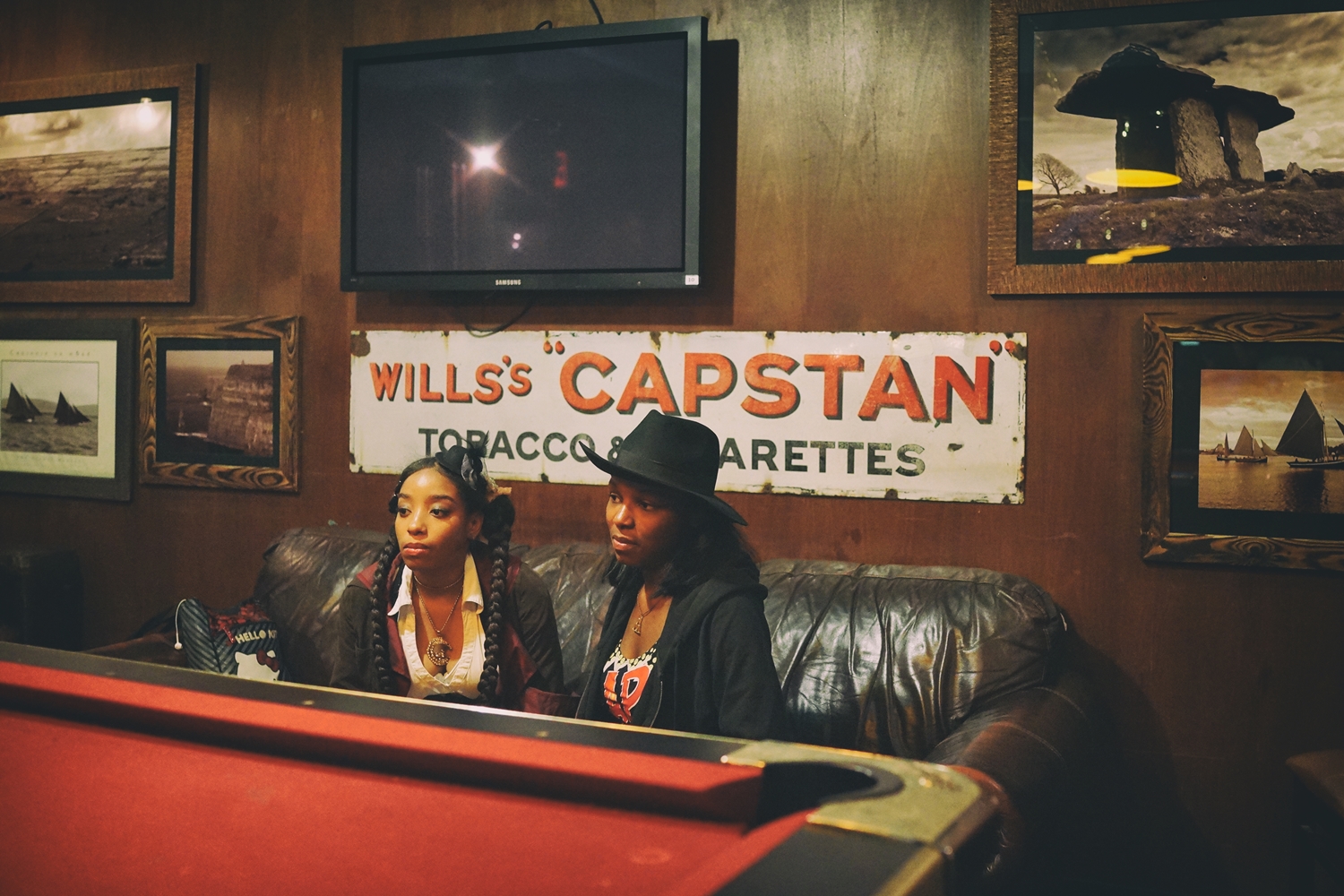Last Updated on 12/21/2018 by Mark Beckenbach
We’re going to take a closer at the street photography and creative process of Jurgen Burgin.
“People tell their own stories about my photos, they discover new things and the photos evoke a narrative stream within them,” says Jurgen Burgin, a German street photographer from Berlin. What’s evident is his strong ambition to connect with his audience and for his work to take them on a journey. Through his dark, mysterious, and, at times, beautifully messy images, he is able to captivate those who view them.
He is a street photographer who creates work that demands attention. We were fortunate enough to speak to him and learn more about his approach to the craft.
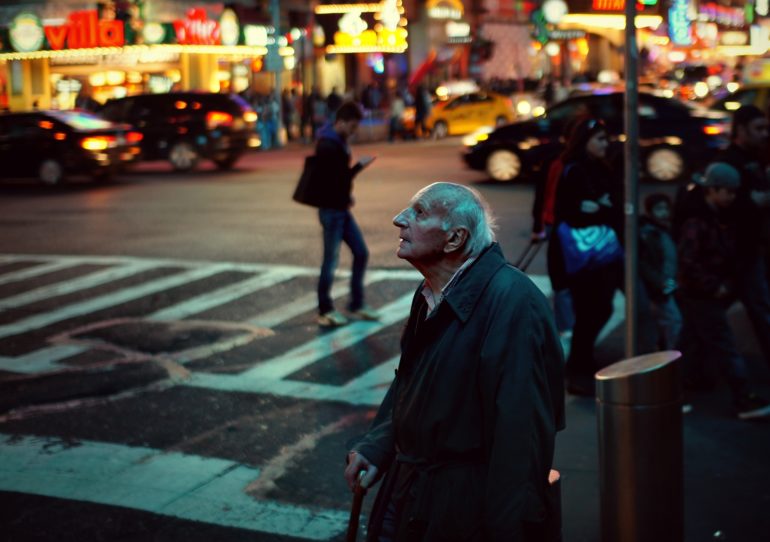
Phoblographer: How would you describe your relationship with street photography?
Jurgen: Well somehow I love it and somehow I hate it. It’s definitely one of the most creative genres in the history of photography. There are so many different styles in street photography and there was a time when it brought lots of new styles and ideas to the history of photography.
Phoblographer: Many street photographers get stuck in their own niche, whereas your work is varied and wonderfully unpredictable – is this intentional?
Jurgen: Yes, definitely. I try to discover new ways of approaching my own style in photography. I do not want to copy what I’ve done in the past over and over again. But from time to time this leads me away from street photography. It’s not an easy way to tell stories or evoke moods with photography.
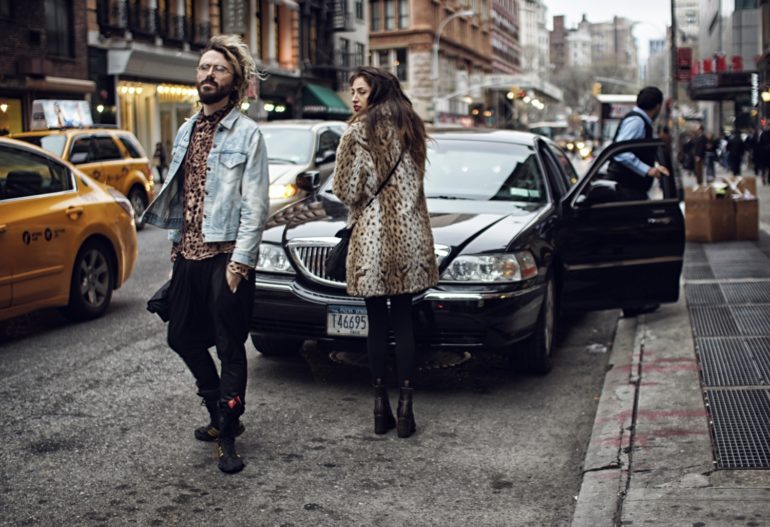
Phoblographer: You have an exhibition titled Intimate Strangers. Can you tell us more about the work and the meaning behind the name?
Jurgen: Intimate Strangers is a street photography project by my friend Jörg Rubbert and I. It’s a New York series and it’s about the people of this wonderful city. We both traveled to New York several times and tried to discover exciting situations and find emotions in the everyday street life of New York. Jörg always works in black and white and with film cameras, I’m more the digital native guy and I work with color. So we confront our two approaches and people seem to find this exciting, as they are trying to discover the stories behind our photographs.
“I do not want to copy what I’ve done in the past over and over again. But from time to time this leads me away from street photography.”
We’ve just had an English class walking through our exhibition at the German American Institute in Tübingen, and they had to invent stories behind our photographs and tell them in English. I secretly listened to their stories and it was simply amazing: They told amazing stories and discovered lots of things in my photographs that I’ve never thought about. It was completely new to me and exciting.
Next year the exhibition will be in Rotterdam and Hamburg, and I hope to show it in more galleries worldwide.
Phoblographer: In your opinion, what makes a compelling street photograph?
Jurgen: I always love photos with secrets in them. I think about photos that hide something, things that I can’t explain – photos that let me think, “what the hell is happening here?” Great street photos have to keep my eye busy, have to evoke moods or tell stories.
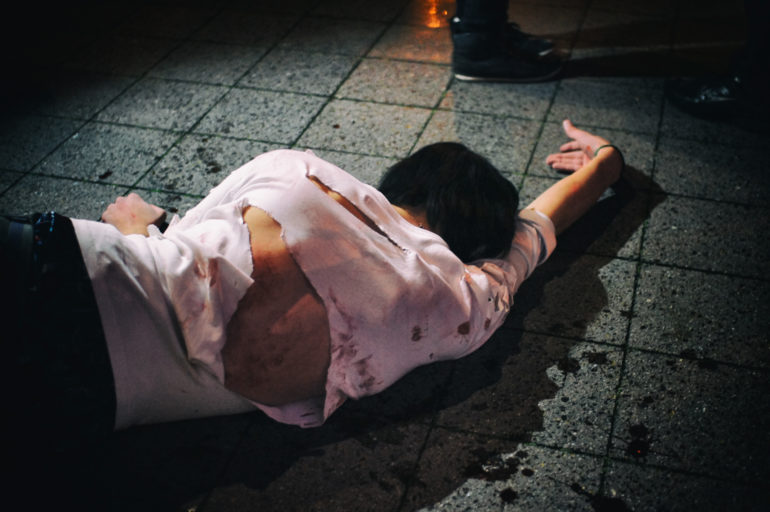
Phoblographer: One of your more controversial images is of a woman blooded, as she lays motionless on the floor – can you tell us what is happening in this scene?
That’s one of the photos that holds such secrecy. I’ve had people who hated me, because I publish a photo of a crime victim. That’s what they thought. But from time to time I reveal the secret behind it. I shot it at Zombiewalk, an annual funny monster and zombie event in Berlin.
Phoblographer: What are your biggest barriers when out shooting street photography?
It’s definitely the difficulty of getting close to people without getting on their nerves. Well, you sure have to always be aware of why you are doing this, and you always have to be ready to talk to people or to explain why you are doing this. Sure, you have to get out of your comfort zone, but no one forces you to do this. If you hate talking to strangers, don’t do it! Find other passions then, or use another genre of photography.
Phoblographer: How do you overcome them?
Practice, talk to strangers, and, as mentioned, get out of your comfort zone.
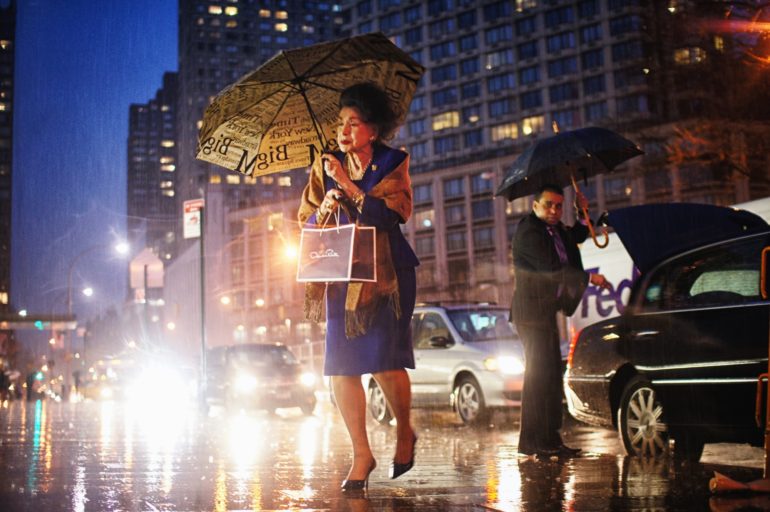
Phoblographer: Your work is far from mundane. It captures the raw emotion of humankind. What steps do you take to achieve this?
I’m not sure if there’s something like mundane street photography. It’s all about everyday life, and everyday life can be very ordinary, dirty, even ugly. Although I also took a lot of photos in the more mundane areas of New York. I remember that lady in the blue dress who came shopping from Fifth Avenue and her driver drove her to Lincoln Center, where she arrived late for the opera, in heavy rain. I think she’s quite mundane.
Phoblographer: Street photography is constantly evolving. Is there anything within your work that is currently frustrating you? Certain elements you may wish to improve?
Currently, I do not do much street photography. After my son was born three years ago I didn’t have much time for street photos: I’m working in the movie business in my day job and then my son, plus photography, that’s too much currently. I’m more concentrated on projects like my current boxing photo project. I’ll publish my second book in 2019, its title will be “PUNCH – A tale from the boxing world”. I was in lots of boxing tournaments and boxing events in the last year and I tried to take emotional photos about winning and losing, about blood, sweat, and pain. And afterwards, I’ll publish my circus photo project. So lots to do and not much time for street photography.
It was a pleasure to understand the frame of mind in which Burgin works in. He is clearly a deep thinker, and this even more apparent through his work and how he feels about it. We’d like to thank him for taking the time to speak with us.
To keep up to date on his work and his new book, be sure to visit his website.
Dan Ginn is a UK based street photographer and writer. Learn more about him via his website and Instagram.


